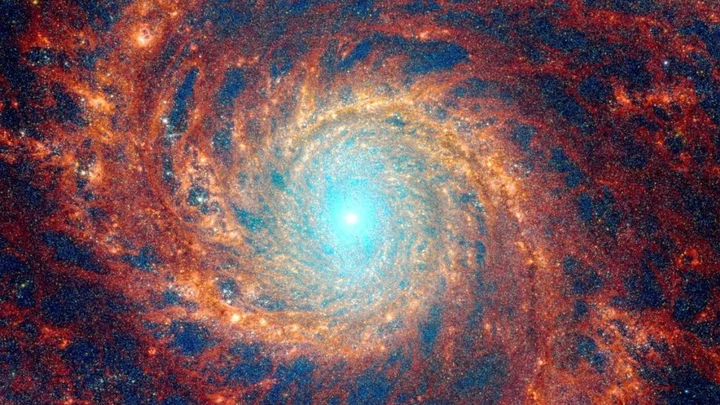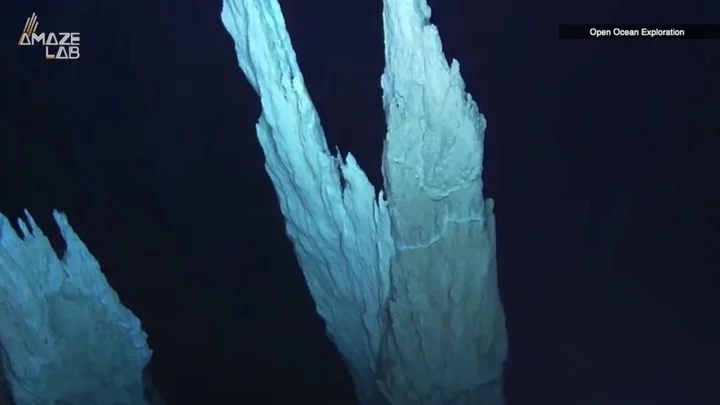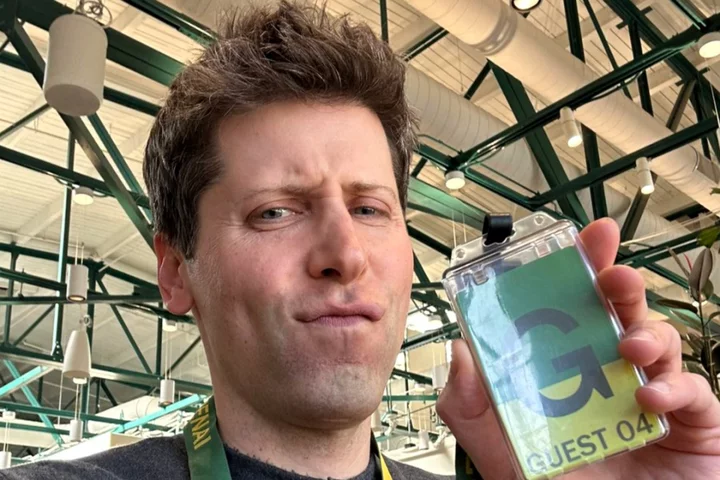
How the Tesla Cybertruck’s Price and Range Will Determine Its Fate
When Tesla Inc. starts delivering Cybertrucks to customers next week, it will answer a question with major implications
2023-11-20 21:24

How to Boost EV Sales? Pay Drivers to Turn in Old Polluting Cars
Colorado drivers bought 9,446 electric vehicles in the most recent quarter, but Carrie Atiyeh is particularly psyched about
2023-11-20 20:52

Pritzker Chases Every Federal Dollar With New $1 Billion EPA Bid
Governor J.B. Pritzker is going after every federal dollar to turn Illinois into a hub for new technologies,
2023-11-20 20:22

The Electric Revolution Is Coming for Your Lawn Mower
It’s a perennial annoyance during quiet weekends in US suburbia: The roar of the neighbor’s lawn mower, the
2023-11-20 19:21

Factbox-Who is OpenAI's interim CEO Emmett Shear?
(Reuters) -ChatGPT-maker OpenAI has named ex-Twitch boss Emmett Shear as its interim chief executive officer after the startup ousted former
2023-11-20 19:16

Scholz Promises €4 Billion for EU-Africa Climate Initiatives
German Chancellor Olaf Scholz pledged €4 billion ($4.4 billion) for the Africa-EU Green Energy Initiative through 2030 and
2023-11-20 18:18

Scientists discover fluffy 'alien' planet where it rains sand
Experts have discovered a fluffy “alien” planet where it rains sand in stunning new observations from the James Webb Space Telescope. The bizarre-looking planet is officially known as exoplanet WASP-107b and has a cloud of silicate sand that exists high within its atmosphere giving it its strange fluffy appearance. NASA’s James Webb Space Telescope (JWST) has been responsible for some astounding findings since it was launched in 2021, including a mysterious galaxy shaped like a question mark. Now, observations made by the telescope have been used by experts who have been able to determine the atmospheric composition of the exoplanet that was pictured. A team of European astronomers found that water vapour, sulfur dioxide and silicate sand clouds existed in the exoplanet’s diverse atmosphere. The exoplanet WASP-107b is one of the lowest-density planets that astronomers are aware of. To put it into context, it is the same size as Jupiter, but has just 12 per cent of Jupiter’s mass. Thanks to its low density, it has allowed scientists to take a deeper look into the planet’s atmosphere, exploring 50 times deeper than would be possible with denser planets. The discovery of sulfur dioxide was a surprise because the host star it orbits only emits a small amount of high-energy light photons. But, its low-density atmosphere allows the photons to penetrate WASP-107b’s atmosphere where the chemical reaction that creates sulfur dioxide can occur. They also discovered that it essentially rains sand on the exoplanet due to the presence of clouds high in the atmosphere made up of fine silicate particles. Experts believe the clouds of sand form in the same way as rain does on Earth as the droplets continually fall and condense back into cloud form. The lead author of the study, Leen Decin from Katholieke Universiteit Leuven in Belgium, explained: “JWST is revolutionizing exoplanet characterisation, providing unprecedented insights at remarkable speed.” She added: “The discovery of clouds of sand, water, and sulfur dioxide on this fluffy exoplanet… is a pivotal milestone. It reshapes our understanding of planetary formation and evolution, shedding new light on our own solar system.” How to join the indy100's free WhatsApp channel Sign up to our free indy100 weekly newsletter Have your say in our news democracy. Click the upvote icon at the top of the page to help raise this article through the indy100 rankings.
2023-11-20 18:17

'Lost City' deep in the Atlantic is like nothing else we've ever seen on Earth
The reality of what lies within our oceans has fascinated people since time immemorial, so it’s no wonder we’ve created countless myths about the watery depths. But step aside, Atlantis, scientists have discovered a real Lost City beneath the waves, and this one is teaming with life. The rocky, towering landscape is located west of the Mid-Atlantic Ridge mountain range, hundreds of metres below the surface of the Atlantic Ocean, and consists of massive walls, columns and monoliths stretching more than 60 metres (200ft) tall. To be clear, it’s not the home of some long-forgotten human civilisation, but that doesn’t make its existence any less significant. The hydrothermal field, dubbed the “Lost City” upon its discovery in the year 2000, is the longest-lived venting environment known in the ocean, Science Alert reports. Nothing else like it has ever been found on Earth, and experts think it could offer an insight into ecosystems that could exist elsewhere in the universe. For more than 120,000 years, snails, crustaceans and microbial communities have fed off the field’s vents, which spout out hydrogen, methane and other dissolved gases into the surrounding water. Despite the absence of oxygen down there, larger animals also survive in this extreme environment, including crabs, shrimps and eels. Although, they are, admittedly, rare. The hydrocarbons produced by its vents were not created by sunlight or carbon dioxide, but by chemical reactions way down on the seafloor. This is how life on our planet may have originated some 3.7 billion years, and how it could be formed on others. "This is an example of a type of ecosystem that could be active on Enceladus or Europa right this second," microbiologist William Brazelton told The Smithsonian back in 2018, referring to the moons of Saturn and Jupiter respectively. "And maybe Mars in the past." The tallest of the Lost City’s monoliths has been named Poseidon, after the Greek god of the sea, and it measures more than 60 metres high. Meanwhile, just northeast of the tower, is a cliffside where the vents “weep” with fluid, producing "clusters of delicate, multi-pronged carbonate growths that extend outward like the fingers of upturned hands", according to researchers at the University of Washington. There are now calls for the Lost City to be listed as a World Heritage site to protect the natural phenomenon, particularly given humans’ propensity to destroy precious ecosystems. Back in 2018, it was confirmed that Poland had won the rights to mine the deep sea around the thermal field. And whilst, in theory, the Lost City would not be touched by such works, as Science Alert notes, the destruction of its surroundings could have unintended consequences. Sign up for our free Indy100 weekly newsletter Have your say in our news democracy. Click the upvote icon at the top of the page to help raise this article through the indy100 rankings
2023-11-20 17:45

Microsoft hires ousted OpenAI boss Sam Altman
Microsoft has hired OpenAI co-founder and former chief executive Sam Altman just days after he was ousted from his company. Mr Altman was fired on Friday, less than a year after launching the hugely successful AI chatbot ChatGPT, with OpenAI’s board saying it “no longer has confidence in his ability to continue leading OpenAI”. Microsoft CEO Satya Nadella was reportedly “furious” about being blindsided by Mr Altman’s firing, despite the tech giant being a key investor of the artificial intelligence firm. On Monday, Mr Nadella announced that both Mr Altman and fellow OpenAI co-founder Greg Brockman would be joining his company. “We’re extremely excited to share the news that Sam Altman and Greg Brockman, together with colleagues, will be joining Microsoft to lead a new advanced AI research team,” Mr Nadella wrote on X, formerly Twitter. “We look forward to moving quickly to provide them with the resources needed for their success.” Mr Altman replied to the post: “The mission continues.” Mr Altman had previously posted a picture of himself wearing an OpenAI guest pass over the weekend, together with the caption: “First and last time I ever wear one of these.” Mr Nadella followed up his original post on X with further details about what Mr Altman’s new role might be within the company. “I’m super excited to have you join as CEO of this new group, Sam, setting a new pace for innovation,” he wrote. “We’ve learned a lot over the years about how to give founders and innovators space to build independent identities and cultures within Microsoft, including GitHub, Mojang Studios, and LinkedIn, and I’m looking forward to having you do the same.” Read More OpenAI in talks to bring Sam Altman back days after CEO ouster, reports say OpenAI co-founder Sam Altman ousted as CEO ChatGPT Plus stops signups after major update ChatGPT creator mocks Elon Musk in brutal tweet ChatGPT goes offline ChatGPT update allows anyone to make their own personalised AI assistant
2023-11-20 17:19

Tired of Waiting for Climate Finance, Africa Sets Up Green Banks
With promises of climate finance from the developed world having largely remained unfulfilled, African nations are now looking
2023-11-20 16:23

Esports superstar Faker's team wins trophy at the League of Legends World Championship
South Korea’s esports powerhouse T1 has won the League of Legends World Championship by defeating China-based Weibo Gaming
2023-11-20 14:48

Parents File Another Class-Action Lawsuit Against Roblox
Back in August, a class-action lawsuit was filed against Roblox alleging that the gaming platform
2023-11-20 13:49
